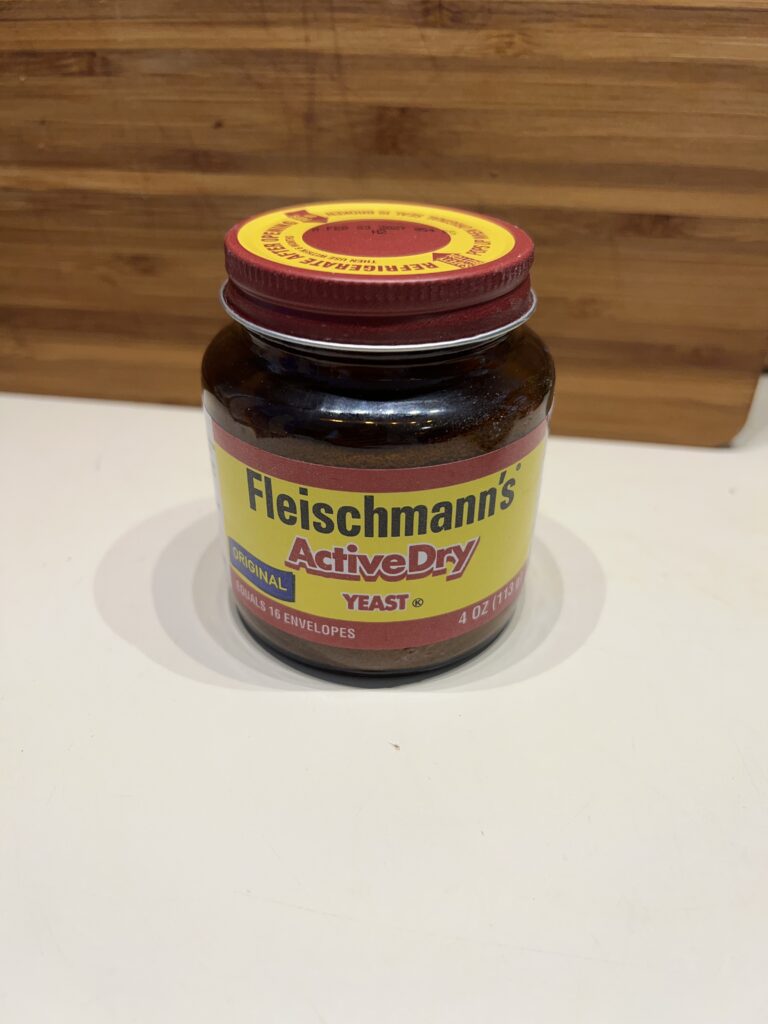Active Dry Yeast
Active Dry Yeast (ADY) is a great way to mix up your dough, proof it, shape it, and get it all baked up in the same afternoon.
I’ve bought it both in little pre-measured packets and in a jar.
You can use Instant, Rapid Rise, and Active Dry Yeasts almost exactly the same (I don’t have a bread machine, so I’m not sure how bread machine yeast behaves. It might be the same, but it might not?). The big difference is that some recipes say things like, “you can then put this dough in the fridge and bake it later!”.
ADY and Instant Yeast doughs can be baked on a different day. Rapid Rise Yeast and Bread Machine Yeast doughs really should be baked same day. The reason being they can over-proof very quickly and then your bread doesn’t rise in the oven and you get a dense brick.
If your recipe calls for Instant Yeast and you use Rapid Rise, you’re fine. You just shouldn’t put it in the fridge and bake it a different day.
Alright! Now Let's Talk About Proofing Yeast.
You will eventually see some recipes that tell you to Proof your yeast. There will be some that don’t Tell you to, but they build it into the recipe instructions.
You will also see recipes that tell you to put your yeast right into the bowl with the rest of the ingredients.
This is a matter of confidence and preference.
Proofing yeast is when you put your yeast into a bowl of warm water (or milk) with some sugar and let it sit for 10-15min. This rehydrates your yeasts and gives them a little snacky snack so they wake back up and are ready to chow down on carbohydrates and produce the carbon dioxide that raises your loaf.
Science!
Yes, those little dried crumb-looking frands are alive… Unless your yeast doesn’t proof, then…y’know…they are not.
ANYways! You can tell your yeasts are alive and happy if you wait for those 10-15min and instead of little grains of yeast at the bottom of the water, you have a frothy almost sludge looking thing floating around at the top. Hooray! Dump it into your mixing bowl.
So why would proof yeast if you don’t always have to?
Honestly, you don’t ever Have to, but some people want to. It helps people to know confidently that their bread is going to rise right. Or, it tells them their yeast has expired and they need to either try another packet or pitch the rest in the trash and buy more.

Do I Proof My Yeast? Sometimes.
My preference is to buy ADY in a jar. I bake a lot, my partner bakes a lot and obviously, some of my recipes are for sourdough and some of my recipes are for ADY. Having a lot on hand suits this house.
You have six months from when you open that jar to use it up for best quality. If the date on the jar is even farther out than six months, you still only have six months for best quality.
I know the yeasts in that jar are fresh and ready to go if I’ve just opened the jar, so I just add my yeast, my sugar, and my warm water (or sometimes warm milk) right into the mixing bowl. No proofing. If I’ve still got a lot left over near the end of the six months, I start paying attention to how my dough proofs and my bread bakes.
If it starts to be “okay” quality instead of “good” quality, I start to proof my yeast whether the recipe calls for it or not.
The packets are different. They’re measured out for one standard loaf of bread (1 1/4 tsp) and most of the time you’re just going to pour the whole thing in. I did come upon a recipe where I didn’t use the entire packet, and another where I used 1 1/2 packets. So, you may end up with an open packet. You can either toss that or fold the packet over, put it in the fridge, and do your best to use it within 2 weeks. You would definitely want to proof yeast from an open packet, in case they started to rehydrate in your fridge. If they rehydrated early, they probably didn’t have the food they needed and died.
All in all, ADY breads are still a learning process but need a lot less time commitment than sourdough recipes.